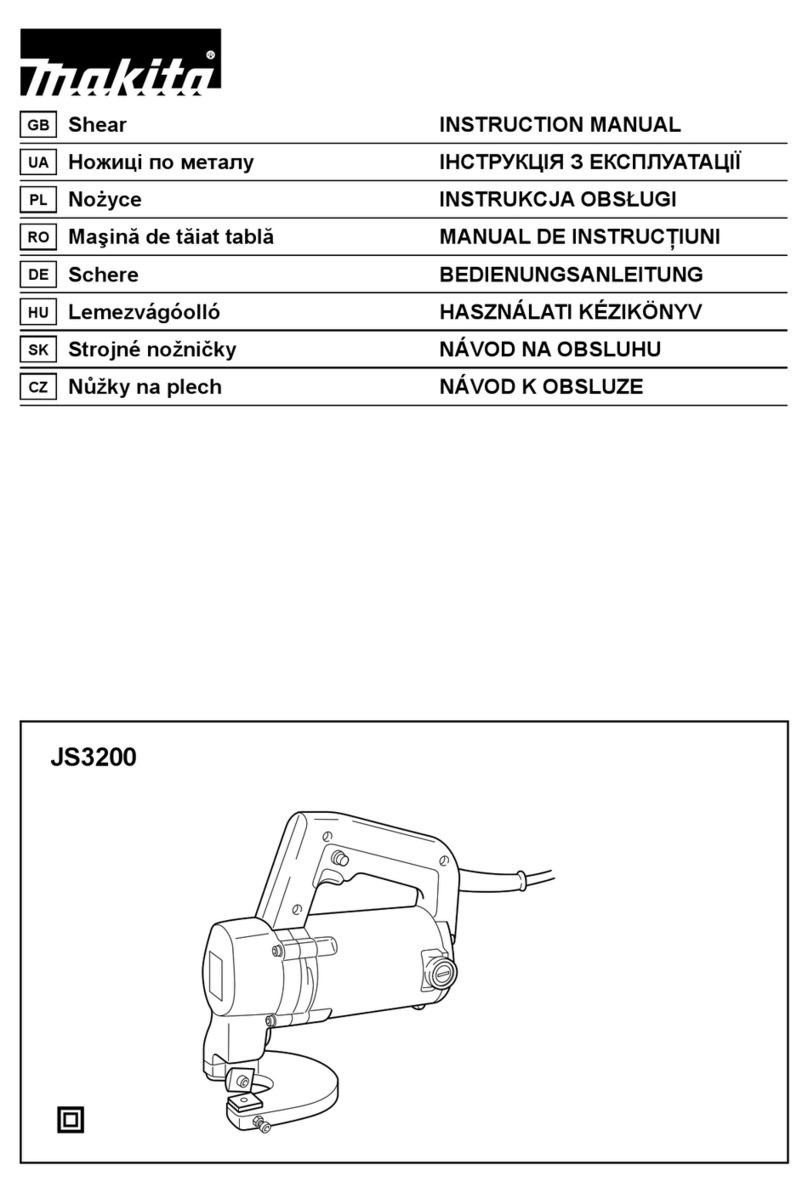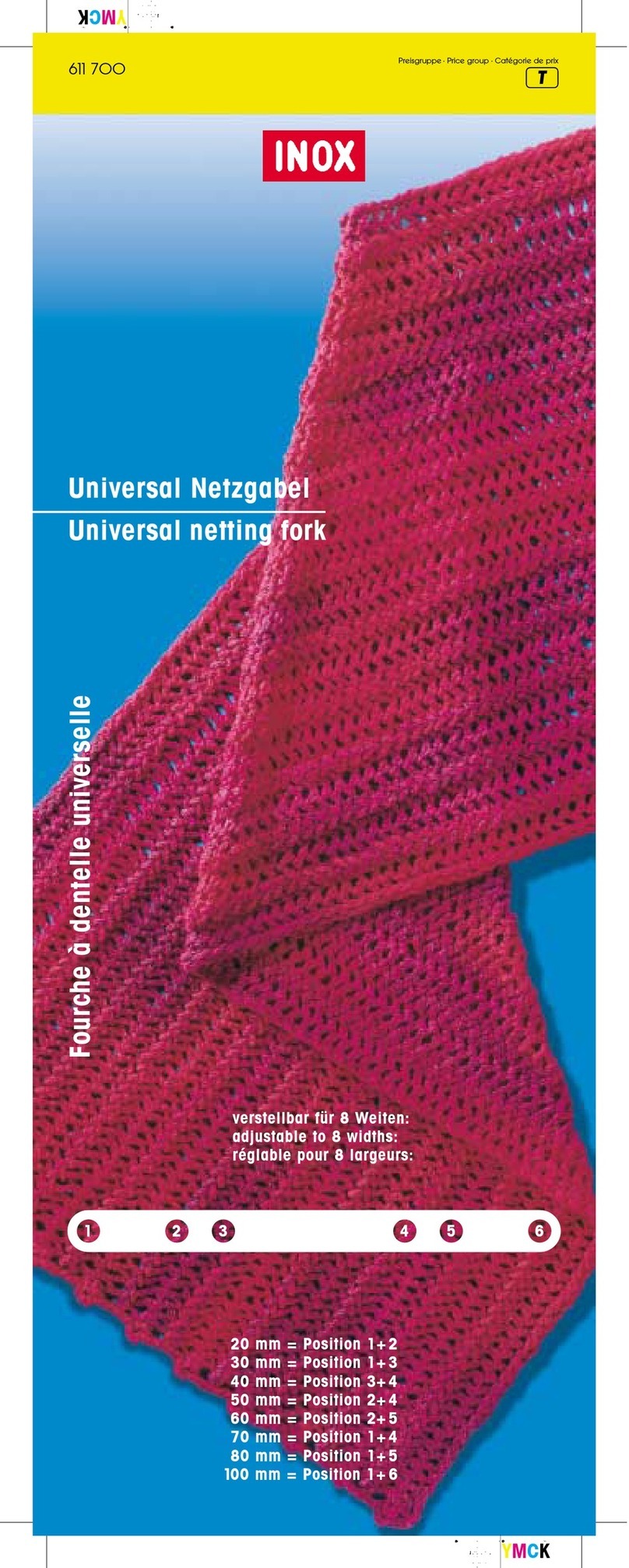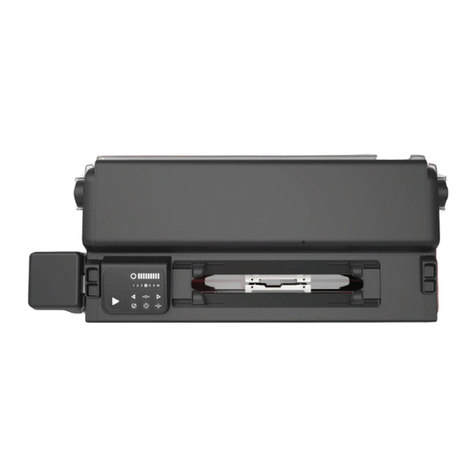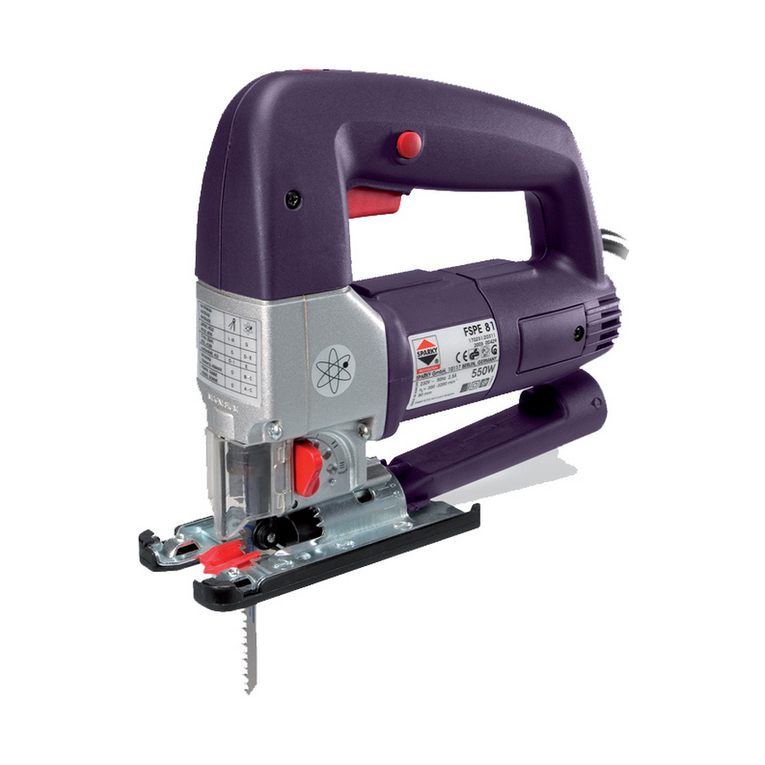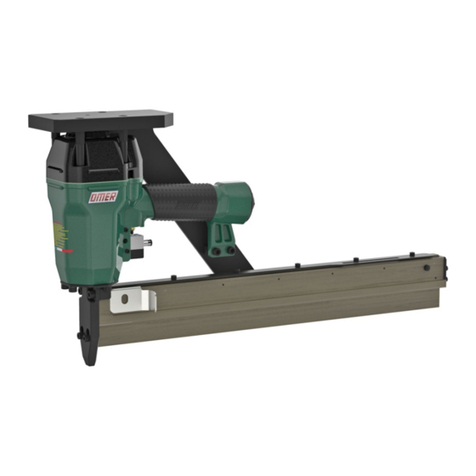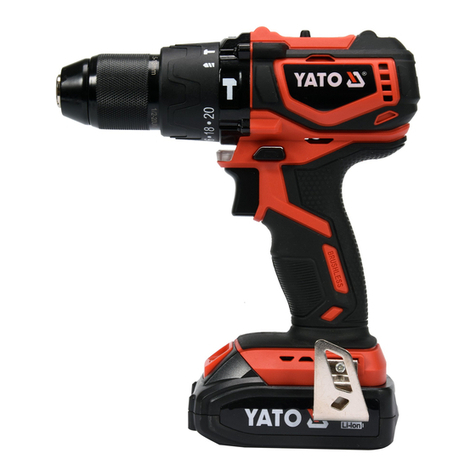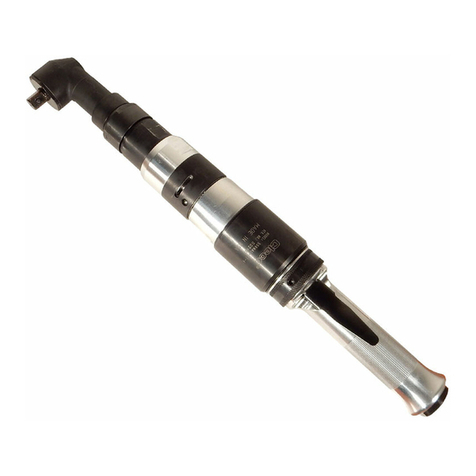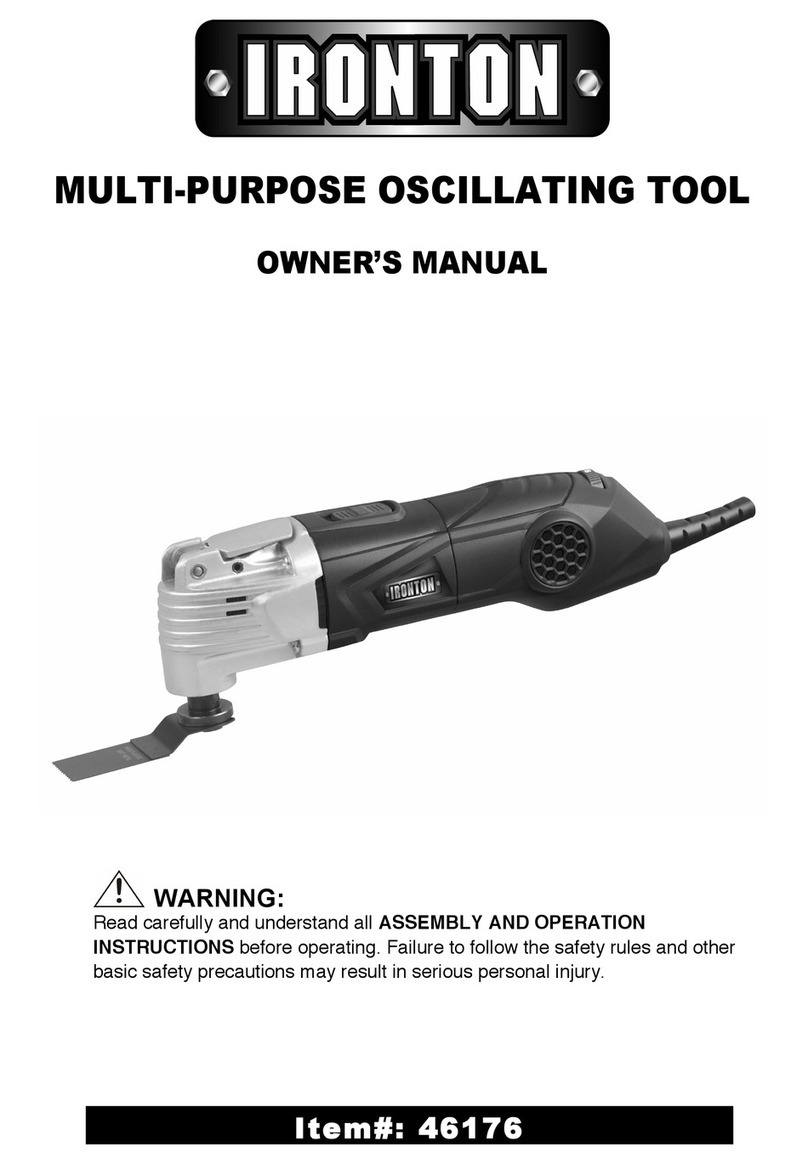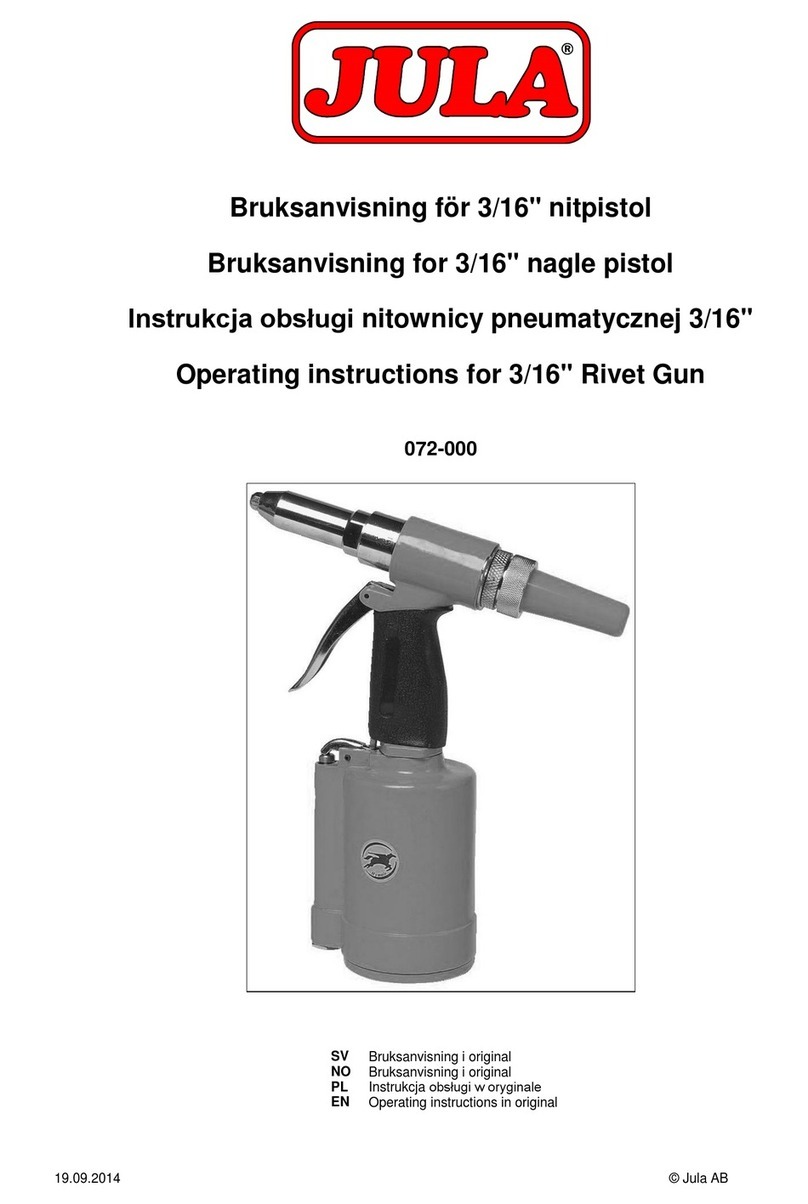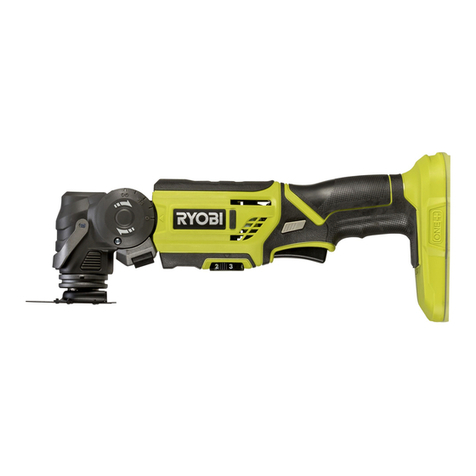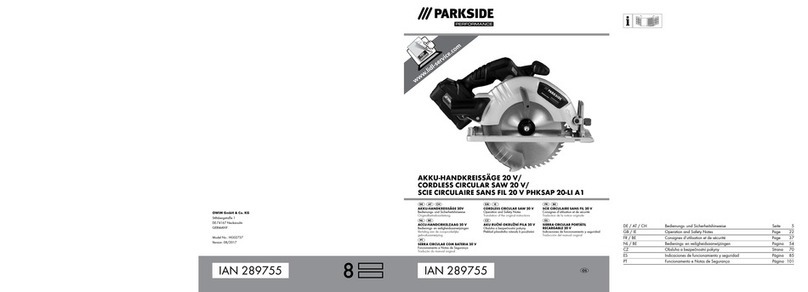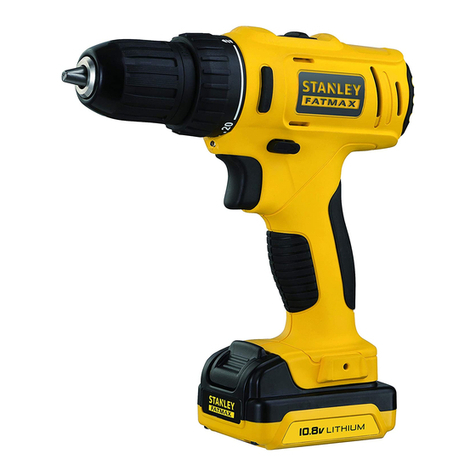instantor IT2020 User manual

Superior Plumbing
Products Manufactured
by Sanbra Fyffe
Instruction
Manual
Instantor Battery
Powered Press Tools
IT2020 & IT2040
Due to continuing improvements, actual product may
differ slightly from the product described herein.
Read this material before using this product.
Failure to do so can result in serious injury.
Save instructions for future reference.

2
Contents
1. Important Safety Information 3
2. General Safety Warnings 4
3. Tool Specific Safety Rules 7
4. Understanding Your Press Tool 8
5. Description of Components 10
6. Operating Instructions 15
7. Maintenance and Servicing 26
8. Troubleshooting 27
9. Warranty 28

3
1. Important Safety Information
Explanation of symbols
Danger with a high degree of risk which results in death or
severe injury (irreversible) if not heeded.
Danger with a medium degree of risk which could result in
death or severe injury (irreversible) if not heeded.
Danger with a low degree of risk which could result in minor
injury (reversible) if not heeded.
Material damage, no safety note! No danger of injury.
Danger
Falling
Electrical voltage
Do not reach inside
Read the operating manual before starting
Use eye protection
Use ear protection

4
2. General Safety Warnings
To work safely with this press tool, it is Imperative to read
carefully the directions for use and to follow the instructions below.
1. Work area safety
a. Keep work area clean and well lit.
Cluttered or dark areas invite accidents.
b. Do not operate power tools in explosive atmospheres, such as in
the presence of flammable liquids, gases or dust. Power tools
create sparks which may ignite the dust or fumes.
c. Keep children and bystanders away while operating a power tool.
Distractions can cause you to lose control.
2. Electrical safety
a. Power tool plugs must match the outlet. Never modify the
plug in any way. Do not use any adapter plugs with earthed
(grounded) power tools. Unmodified plugs and matching outlets
will reduce risk of electric shock.
b. Avoid body contact with earthed or grounded surfaces, such as
pipes, radiators, ranges and refrigerators. There is an increased
risk of electric shock if your body is earthed or grounded.
c. Do not expose power tools to rain or wet conditions.
Water entering a power tool will increase the risk of electric shock.
d. Do not abuse the cord. Never use the cord for carrying, pulling
or unplugging the power tool. Keep cord away from heat, oil,
sharp edges or moving parts. Damaged or entangled cords
increase the risk of electric shock.
e. When operating a power tool outdoors, use an extension cord
suitable for outdoor use. Use of a cord suitable for outdoor
use reduces the risk of electric shock.
f. If operating a power tool in a damp location is unavoidable,
use a residual current device (RCD) protected supply.
Use of an RCD reduces the risk of electric shock.

5
3. Personal safety
a. Stay alert, watch what you are doing and use common sense
when operating a power tool. Do not use a power tool while you
are tired or under the influence of drugs, alcohol or medication.
A moment of inattention while operating power tools may
result in serious personal injury.
b. Use personal protective equipment. Always wear eye protection.
Protective equipment such as a dust mask, non-skid safety shoes,
hard hat or hearing protection used for appropriate conditions
will reduce personal injuries.
c. Prevent unintentional starting. Ensure the switch is in the
off-position before connecting to power source and/or battery
pack, picking up or carrying the tool. Carrying power tools with
your finger on the switch or energising power tools that have
the switch on invites accidents.
d. Remove any adjusting key or wrench before turning the power
tool on. A wrench or a key left attached to a rotating part of
the power tool may result in personal injury.
e. Do not overreach. Keep proper footing and balance at all times.
This enables better control of the power tool in unexpected situations.
f. Dress properly. Do not wear loose clothing or jewellery. Keep
your hair and clothing away from moving parts. Loose clothes,
jewellery or long hair can be caught in moving parts.
g. If devices are provided for the connection of dust extraction and
collection facilities, ensure these are connected and properly used.
Use of dust collection can reduce dust-related hazards.
h. Do not let familiarity gained from frequent use of tools allow
you to become complacent and ignore tool safety principles.
A careless action can cause severe injury within a fraction of a second.
4. Tool, use and care
a. Do not force the power tool. Use the correct power tool for your
application. The correct power tool will do the job better and
safer at the rate for which it was designed.
b. Do not use the power tool if the switch does not turn it on and off.
Any power tool that cannot be controlled with the switch is
dangerous and must be repaired.
c. Disconnect the plug from the power source and/or remove the
battery pack, if detachable, from the power tool before making
any adjustments, changing accessories, or storing power tools.
Such preventive safety measures reduce the risk of starting
the power tool accidentally.

6
d. Store idle power tools out of the reach of children and do
not allow persons unfamiliar with the power tool or these
instructions to operate the power tool. Power tools are dangerous
in the hands of untrained users.
e. Maintain power tools and accessories. Check for misalignment
or binding of moving parts, breakage of parts and any other
condition that may affect the power tool’s operation. If damaged,
have the power tool repaired before use. Many accidents are
caused by poorly maintained power tools.
f. Keep cutting tools sharp and clean. Properly maintained cutting
tools with sharp cutting edges are less likely to bind and are
easier to control.
g. Use the power tool, accessories and tool bits etc. in accordance
with these instructions, taking into account the working.
conditions and the work to be performed. Use of the power tool
for operations different from those intended could result in a
hazardous situation.
h. Keep handles and grasping surfaces dry, clean and free from oil
and grease. Slippery handles and grasping surfaces do not allow
for safe handling and controlof the tool in unexpected situations.
5. Battery tool use and care
a. Recharge only with the charger specified by the manufacturer.
A charger that is suitable for one type of battery pack may
create a risk of fire when used with another battery pack.
b. Use power tools only with specifically designated battery packs.
Use of any other battery packs may create a risk of injury and fire.
c. When battery pack is not in use, keep it away from other metal
objects, like paper clips, coins, keys, nails, screws or other small
metal objects, that can make a connection from one terminal
to another. Shorting the battery terminals together may
cause burns or a fire.
d. Under abusive conditions, liquid may be ejected from the battery;
avoid contact. If contact accidentally occurs, flush with water.
If liquid contacts eyes, additionally seek medical help.
Liquid ejected from the battery may cause irritation or burns.
e. Do not use a battery pack or tool that is damaged or modified.
Damaged or modified batteries may exhibit unpredictable
behaviour resulting in fire, explosion, or risk of injury.
f. Do not expose a battery pack or tool to fire or excessive
temperature. Exposure to fire or temperature above 130°C
may cause explosion.

7
g. Follow all charging instructions and do not charge the battery
pack or tool outside the temperature range specified in the
instructions. Charging improperly or at temperatures outside the
specified range may damage the battery and increase the risk of fire.
6. Service
a. Have your power tool serviced by a qualified repair person
using only identical replacement parts. This will ensure that
the safety of the power tool is maintained.
b. Never service damaged battery packs. Service of battery packs
should only be performed by the manufacturer or authorized
service providers.
3. Tool Specific Safety Rules
a. Maintain labels and nameplates on the tool which carry
important safety information. If illegible or missing,
contact the agent for replacement.
b. Do not put your fingers into the head of the tool during operating.
Your fingers could be pinched very severely.
c. Make sure the head is locked firmly during operation.
d. Do not knock any parts of the tool, otherwise it could cause injury.
e. The design of the limit screw on the head is for preventing
the head from dropping or popping.
f. Make sure the head is locked firmly during operation.
g. Do not use this tool for continuous use.
After 30 to 40 cycles, allow the tool to cool for 15 minutes.
h. Do not secure this tool in a vice.
This tool is designed for hand-held operation.
i. The built-in safety valve goes through strict pressure test before
marketing; please do not adjust the pressure. If the pressure is
not enough please return the tools back to the service centre.
The tool only can be reused after checking and testing by a
suitably trained person.
j. The warnings, precautions, and instructions discussed in this
instruction manual cannot cover all possible conditions and
situations that may occur. It must be understood by the operator
that common sense and caution are factors which cannot be
built into this product, but must be maintained by the operator.

8
4. Understanding Your Press Tool
The IT2020 and IT2040 tools can be used for connecting stainless steel
pipe, MLCP, PEX pipe with suitable press fittings (Instantor Press and
Copper Press Fittings). The high pressure hydraulic system is powered
by a Li-ion battery, actuated by motor and controlled by MCU.
See the table opposite for device specification and scope of supply.

9
Model IT2020 IT2040
Rated Pressure 19kN 32kN
Stroke 30mm 40mm
Pressing Range: Thin-wall Copper pipe: Thin-wall Copper pipe:
12-35mm (1/2”-1”) 6-100mm (1/4”-4”)
Thin-wall stainless steel Thin-wall stainless steel
pipe: 12-28mm (1/2”-1”) pipe: 12-54mm (1/2”-2”)
MLCP, Multilayer Composite Pipe MLCP, Multilayer Composite Pipe
(Pex-Al-Pex): 16-32mm (1/2”-4”) (Pex-Al-Pex): 12-100mm (1/2”-4”)
Service Interval Yearly or after 20,000 Cycles Yearly or after 30,000 Cycles
Oil Capacity 60ml 250ml
Hydraulic Oil Shell Tellus T15# S2V HV15 Shell Tellus T15# S2V HV15
Ambient Temperature -10~40˚C -10~40˚C
Voltage/Capacity DC 18V, 4.0Ah DC 18V, 4.0Ah
Charging Voltage AC 100V-240V; 50-60Hz AC 100V-240V; 50-60Hz
Charging Time Approx. 80mins Approx. 80mins
Weight 2.4kg (with battery) 4.1kg (with battery)
Size of Tool 363 x 119 x 75mm 490 x 89 x 123mm
ACCESSORIES:
Battery 2 pcs 2 pcs
Charger 1 pc 1 pc
Jaws 1 set 1 set
VI Profile Jaws M Profile Jaws
or M Profile Jaws or TH Profile Jaws
or TH Profile Jaws
Carry Strap 1 pc 1 pc

10
5. Description of components
Parts No.
1
2
3
4
5
6
7
1
2
3
4
7
5
6
Description
Jaw
Pin
Trigger
Retract Button
Battery Lock
Battery
OLED Display
Function
For pressing, interchangeable jaw
For locking / removing the jaw
For starting pressing operation
For manual retracting the piston
in case of an incorrect operation
For locking / unlocking the battery
For supplying power, rechargeable Li-ion (18V)
Showing press count and
operating information
IT2020

11
Parts No.
1
2
3
4
5
6
7
8
9
10
Description
Jaw
Serial No.
Security Icon
Pin
White LED
Retract Button
Red / Green LED
Trigger
OLED Display
Battery
Function
For pressing, interchangeable jaw
For product traceability
For warning
For locking / removing the jaw
For Lighting work surface
For manual retracting the piston
in case of an incorrect operation
For indicating the operating condition
and battery discharging situation
For starting pressing operation
Showing press count and
operating information
For supplying power, rechargeable Li-ion (18V)
IT2040

12
Function description
Microcomputer control system-automatically detects
the pressure when in operation.
OLED display - Dot matrix OLED display which shows press
count, battery power, working pressure (if equipped with
pressure sensor), maintenance reminding and fault codes.
Optional Bluetooth wireless communication technology -
Can establish wireless communication with mobile phones,
tablets, etc., to read press count, usage status, maintenance
reminders and other additional information.
Pressure monitoring and control technology -
The pressure of the tool system is monitored by a pressure
sensor and the tool is pressure controlled (if configured).
Auto reset - Releases the pressure automatically, retracts the
piston to the starting position when the max output is reached.
Manual reset. Can retract the piston to the starting
positioning in case of an incorrect operation.
The unit is equipped with a double piston pump which is
characterised by a rapid approach of the die towards the
connector and a slow working motion.
The head can be smoothly turned by 180° in order to gain
better access to tight corners and other difficult working areas.
If a deviation from the set operation pressure or low battery
charge is identified, an acoustic signal sounds and a red
display flashes.
The overall structure of the tool is compact. Itis
ergonomicallydesignedwitha non-sliprubbergrip
andanoptimisedcenterofgravityforeasier operation.
A temperature sensor alerts when the temperature reaches
above 60˚C. A fault signal sounds and the tool should be left
to cool before being used again.

13
Table 1 – Display Function and Meaning
1
4
5
6
7
2
3
Indication
Self-Checking
Motor
Overload
Hydraulic
System
Malfunction
High
Temperature
Warning
Dangerous
Operation
Protection
Standby
Charging
Reminder
Audible Signal
OLED
Screen Description
Device self-checking to
assure correct function.
–
–
–
• • • • •
(2Hz)
–
• • •
(2Hz)
•
(5s)
• • • •
(2Hz)
• • • • •
(2Hz)
Motor overload detected.
Hydraulic system
malfunction detected.
Motor surface
temperature detected
above 60˚C. Allow to cool.
System malfunction
detected.
Device isready to
commence pressing
operations. Battery full.
Battery power low,
charging reuired.
Limited pressing
operations remaining
with current charge level.
Battery empty.
Insufficient power for
pressing operations.
No power.
Replace battery with
fully charged battery.

14
9*
10*
Indication
Information
Screen
Press Cycle
Count
Audible Signal
OLED
Screen Description
Software version number.
Shows current press cycle
count and remaining press
cycles before next service.
*Available on IT2040 model only
–
–
8Maintenence
Reminder
•
(0.5s) Tool Servicing Required.

15
6. Operating Instructions
Read the entire safety information section at the beginning of this manual
including all text under subheadings therein before using this product.
Use this tool for the manufacture’s intended purpose only.
Use other than that which is described in this manual could
result injury or property damage.
1) Do not hammer or impact any part of the tool. Before operation,
check the tool for any damage, aging, missing parts, misalignment or
component jamming and any other unfavourable factors that may
endanger safety and normal operation.
2) During the crimping process, the jaw fixing pin must be fully
inserted into the clamp head to lock and prevent the jaw fixing pin
from slipping out.
3) When pressing, the O-ring ring groove of the pipe fitting must be
placed in the ring groove of the jaws. Otherwise, the O-ring could
easily be crushed and water leakage could occur.
4) The limit screw on the clamp head prevents the clamp head
from falling off or popping out. Do not attempt to remove it.
5) Remove any grease or dust, from the handle and control components,
to prevent the tool from slipping during use.
6) The built-in safety valve undergoes strict pressure detection before
leaving the factory; the end user must not adjust it. If you are
experiencing under-pressure issues, please take the tool to a
qualified service technician for pressure testing and service.
During the extension of the tool piston, do not put any part
of the human body such as your fingers into the working jaws.

16
1. Charging
Follow the steps below to remove the battery and charge it using the
battery charger supplied. Ensure the room temperature is between
10˚C - 40˚C. The charging time is approximately 80mins.
For detailed charging information, please refer the charger manual.
2. Remove battery
2. Insert battery
1. Push lock
1. Push lock
Push
10-40˚C
1
3
2
4

17
2. Battery Care Information
1) The battery can be cycled hundreds of times. A drop in battery
capacity is expected after a significant amount of cycles.
When this occurs, please contact your retailer regarding souring
a replacement battery.
2) As with all Li-ion batteries, running them down fully and
leaving them at a low state of charge can damage the battery.
It is recommended to charge the batter once the initial low
battery warning is displayed on the device.
3) Do not connect the two poles of the battery with a wire,
which is likely to cause electric arcing or even combustion.
4) Do not use a damaged battery. This will increase the risk of
abnormal operation or electric shock.
5) Under no circumstances should batteries be burned as they may explode.
6) When charging the battery, do not cover the charger with any object,
so that the charger cannot dissipate heat. This could result in the
charger overheating.
7) Disconnect the charger when not in use. It will reduce the risk
of injury to children and untrained personnel.
8) Do not use the charger in a humid environment, and do not expose
to rain and snow, as it will increase the risk of electric shock.
9) Do not disassemble the battery and charger. If the battery is defective,
pease return the battery to the retailer for a replacement.

18
3. Using the Tool – IT2020
3.1 Changing the jaws and completing pressing operations
1) Rotate the jaw retaining pin 180˚C and pull it outwards. Insert the
jaw into the press tool, push the pin inwards and rotate it back 180˚C.
2) Manually open the jaws and move them into position around the
pipe fitting to be pressed.
3) Press and hold the trigger to commence the pressing operation.
The piston will extend to close the jaws around the fitting and
automatically return to its starting position.
4) Manually open the jaws to remove the tool from the pressed fitting.
5) Add machine oil as indicated to reduce friction and maintain
smooth operation.
1. Open the
pressing jaw
1. Open the
pressing jaw
2. Place over
pipe fitting
2. Remove
from pipe
fitting
1. Add machine oil
2. Piston
extends to
close the
jaws
1. Press and
hold the trigger
Piston automatically
resets after full pressing
2
4
1
3
5
1. Rotate the
pin by 180˚
and pull out
2. Insert jaw
into press gun

19
3.2 OLED display interface description
Maintenance
Reminder
Press Cycle Count
Battery
Status
Information
Display Area

20
4. Using the Tool – IT2040
4.1 Changing the jaws and completing pressing operations
1) Push and rotate the jaw retaining pin anti clockwise.
The retaining pin spring will force the pin outwards. Insert the
jaw into the press tool, push the pin inwards to lock it into position.
2) Manually open the jaws and move them into position around
the pipe fitting to be pressed.
3) Press and hold the trigger to commence the pressing operation.
The piston will extend to close the jaws around the fitting
and automatically return to its starting position.
4) Manually open the jaws to remove the tool from the pressed fitting.
5) Add machine oil as indicated to reduce friction and
maintain smooth operation.
1. Push and turn pin
anticlockwise to release pin
1. Open the
pressing jaw
2. Remove
from pipe fitting
3. Push pin
inwards to
lock it into
position
1. Press and
hold the
trigger
2. Manual
retract button
Piston automatically
reset after full pressing
Add the machine oil
2. Insert jaw
into press tool
Open the
pressing jaw
Place pipe over fitting
1
3
5
2
4
6
This manual suits for next models
1
Table of contents
Popular Power Tools manuals by other brands
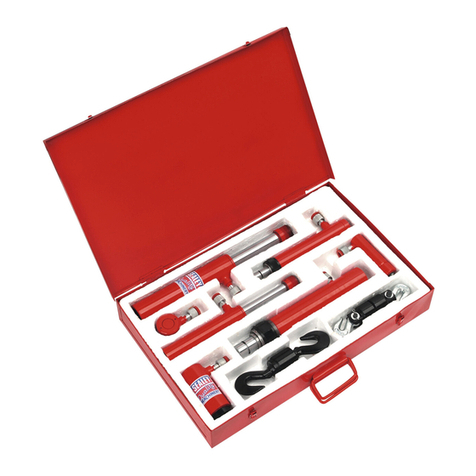
Sealey
Sealey RE97XCKIT instructions
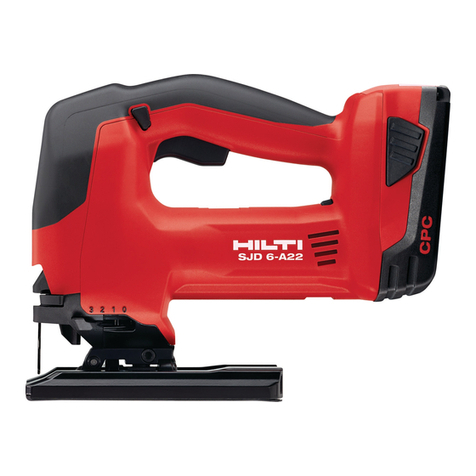
Hilti
Hilti SJD 6-A22 operating instructions
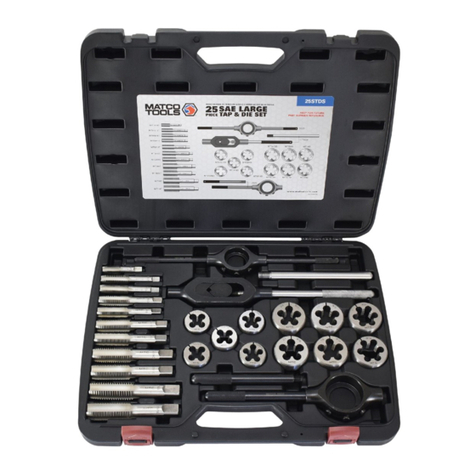
Matco Tools
Matco Tools 25STDS quick start guide
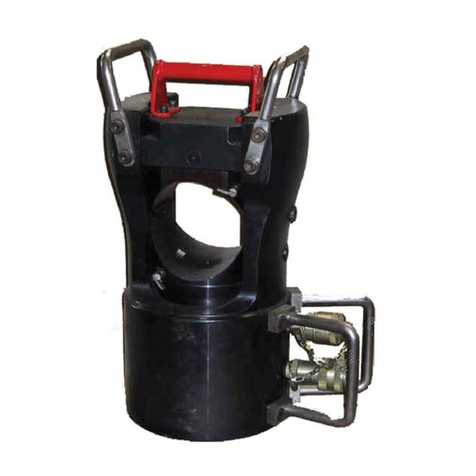
Huskie Tools
Huskie Tools EP-100WC Operating instruction manual with Parts List
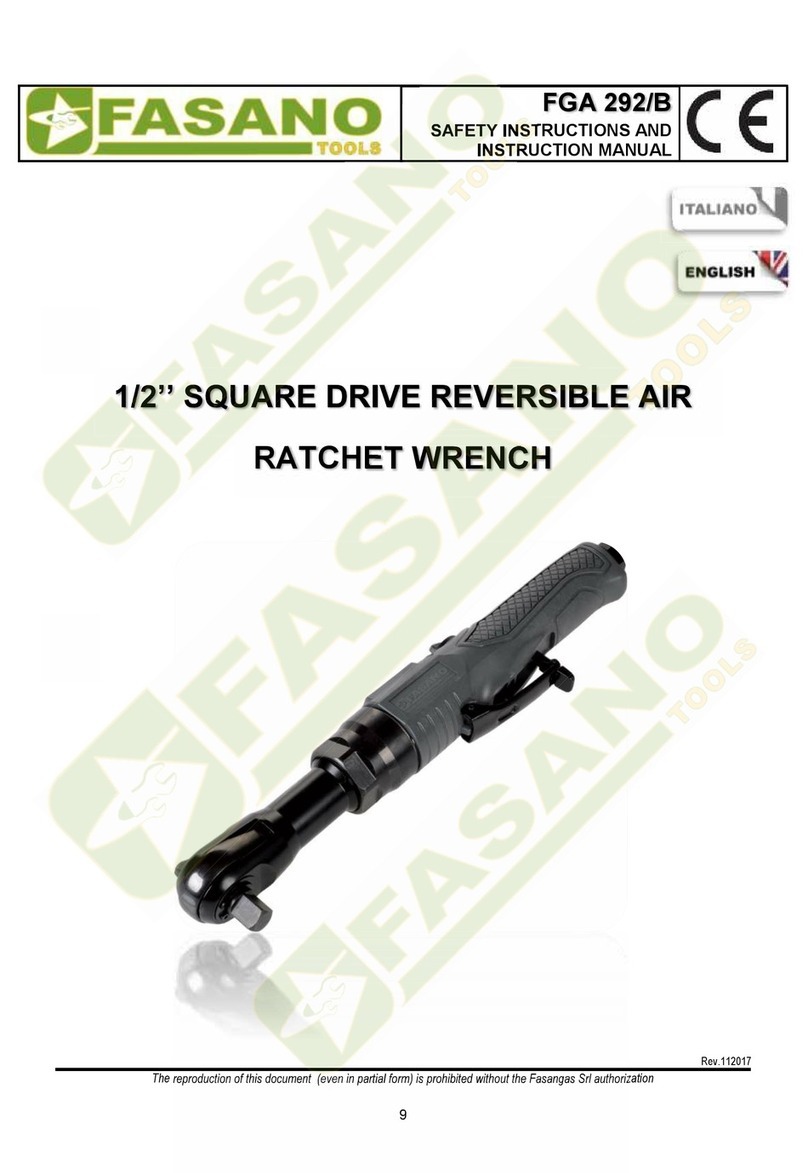
FASANO TOOLS
FASANO TOOLS FGA 292/B Safety instructions and instruction manual

Shop fox
Shop fox SHOP FOX W1701 owner's manual
